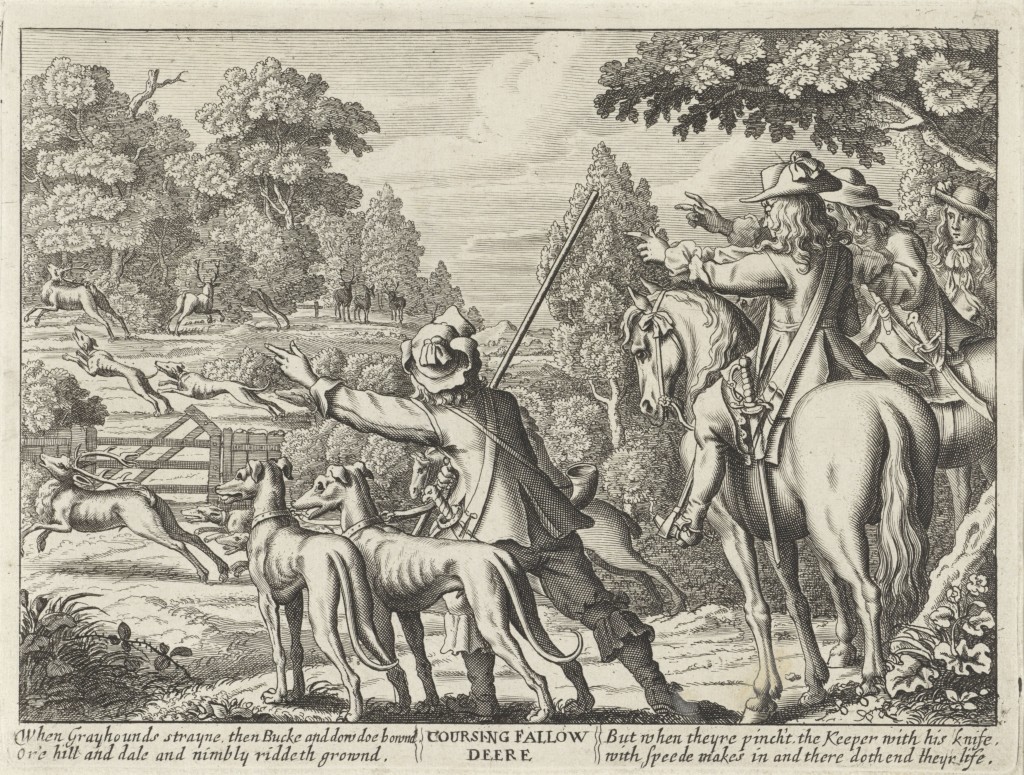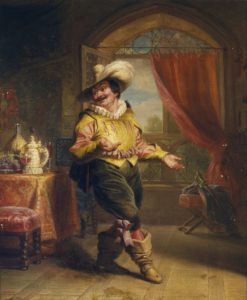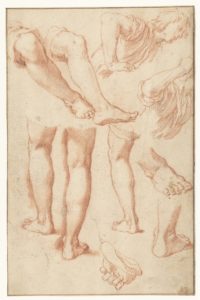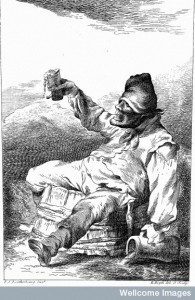
Over the summer, as some of you will have seen from my post about aphrodisiacs in manuscript recipe books, I spent some time in the record office in Stafford. I was there primarily to read Richard Wilkes’ diary, which contains a mix of local information, interesting stories and medical observations. The diary is a wonderful record of life in the area and paints a vivid picture of people’s experiences.
There were numerous interesting tales in the small, neat book. One in particular that caught my eye, a man suffering from a gunshot wound. We have seen before that gunshot wounds were becoming more common in this era, and that surgeons on the battlefield developed new techniques for helping the wounded. But this caught my eye not only because the gunshot wound sounded severe, but also because of the way in which the wound was received.
Wilkes wrote that on 26 December 1736,
Craven Kindersley Esq. Of Loxley died of a Wound in his Knee, w[hi]ch he had unfortunately receiv’d a Week before. A servant was wounded at the same Time in the Arm by the same Ball. It was cut off below the Elbow & he recover’d. These two in company w[I]th the Keeper having catcht a Doe w[i]th a Greyhound, were shot by a Gun, w[hi]ch had been laid upon the Ground; the Dog accidentally having leapt upon the Trigger. The Peice [sic] lay w[I]th the Muzzle somew[ha]t elevated; & so the Ball first wounded the servant, who was on Foot & the Master as he was a Horseback at about 8 or 10 yards Distance.
The bite of a dog could be potentially dangerous, but this was en entirely different ball game. Wilkes didn’t explain exactly what treatment Craven received, perhaps it seemed irrelevant given the outcome. Similarly little information was recorded about the servant’s amputation. This perhaps suggests that, rather unusually given some of the things we have seen on this blog, the method by which the wound was inflicted was more intriguing (perhaps more gruesome) than the medicine that followed.






One thought on “Dog Danger”
Comments are closed.